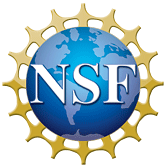Model:GNE
From CSDMS
GNE
Introduction
History
Papers
GNE Questionnaire
Contact Information
| Model: | Global NEWS / GNE |
| Contact person: | Sybil Seitzinger |
| Institute: | Rutgers - Institute of Marine & Coastal Sciences |
| City: | New Brunswick, NJ |
| Country: | USA |
| Email: | sybil@marine.rutgers.edu |
| 2nd person involved: | Emilio Mayorga (Developer) |
| 3rd person involved: | John Harrison (Developer) |
Model description
| Model type: | Single model for the terrestrial and coastal domain. |
| Description: | A multi-element (N, P, Si, C), multi-form (particulate, dissolved, organic, inorganic) set of biogeochemical sub-models that predicts annual river exports to the coast as a function of basin-aggregated natural and human impact characteristics; GNE is a generic framework used to run the basin models. |
Technical information
| Supported platforms: | Linux, Windows |
| Programming language: | Python |
| Model was developed started from: | 2002 and development still takes place |
| To what degree will the model become available: | As code, as teaching tool |
| Current license type: | -- |
| Memory requirements: | minimal |
| Typical run time: | less than 1 minute after preprocessing |
Input / Output description
| Input parameters: | Source inputs consist of global, spatially distributed (GIS) raster datasets: hydrological properties (river basin systems, runoff, reservoirs, irrigation, rainfall), topographic slope, land use, agricultural N & P inputs (fertilizer, manure), atmospheric N deposition, sewage, N fixation, etc. |
| Input format: | ASCII, Binary |
| Output parameters: | Primary outputs: N, P, Si, and C yields and loads by river basin and nutrient form. Secondary outputs: Source attribution by nutrient form and main natural and anthropogenic inputs to watersheds. Total Suspended Solids are also predicted. |
| Output format: | ASCII |
| Post-processing software (if needed): | no |
| Visualization software (if needed): | yes, out_ESRI, IDL, Matlab, Most GIS software |
Process description
| Processes represented by model: | Natural, agricultural, atmospheric, and direct human (sewage and P detergents) inputs; effect of hydrological functioning; generalized loss of nutrients in soils and groundwater; loss in rivers, reservoirs, and through consumptive water withdrawals (irrigation). |
| Key physical parameters & equations: | Net N & P land surface balance (from inputs, incl. atm. deposition) modulated with calibrated runoff relationships to estimate exports to streams; point sources calculated from socioecon. and sewage treatment information; reservoir and consumptive water withdrawal loss using physical relationships. |
| Length scale & resolution constraints: | Limited by resolutn of input & river systems data; basins < 20,000 km2 currently poorly represented |
| Time scale & resolution constraints: | Operates at annual scale; monthly-seasonal time steps are being explored. |
| Numerical limitations and issues : | Concerns about extrapolations beyond range of data used for model calibration and parameterization. |
Testing
| Available calibration data sets: | Calibration data consist of compilations of river N, P, Si and C annual yields by form. |
| Available test data sets: | Global (GEMS-GLORI), regional, national and literature compilations. A subset used for validation. |
| Ideal data for testing: | Robust river nutrient fluxes near the mouth representative of annual, contemporary conditions. |
User groups
| Currently or plans for collaborating with: | Model is the result of an international collaboration that is a UNESCO-IOC workgroup (Global NEWS). |
Documentation
| Key papers of the model: | Papers published in Global Biogeochem. Cycles listed on Global NEWS website; code not published yet. |
| Is there a manual available: | yes |
| Model website if any: | http://www.marine.rutgers.edu/globalnews/ |
Additional comments
| Comments: | Particulates model is regression-based, while dissolved model is more conceptual-mechanistic. Conceptual framework and data sets in development since 2002. Integrated modeling code framework (GNE) developed in 2007; currently tested on Windows only, but can be easily adapted to other platforms. |
